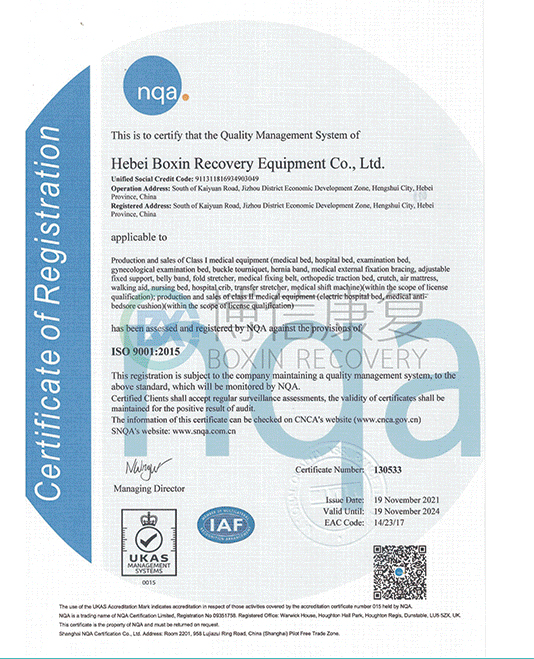Welcome to our websites!
Innovative Designs for Ambulance Beds to Enhance Patient Comfort and Safety
The Importance of Ambulance Beds in Emergency Medical Services
In emergency medical services (EMS), the tools and equipment utilized can mean the difference between life and death. Among these critical components, ambulance beds—often referred to as stretchers or gurneys—play an essential role. Their design and functionality are tailored to provide immediate care to patients while ensuring their safety and comfort during transport to medical facilities.
Ambulance beds are specifically engineered to withstand the rigors of emergency transport. Typically made from lightweight yet durable materials like aluminum and high-strength plastics, modern ambulance beds can support various patient needs, accommodating everything from minor injuries to critical conditions. One of their key features is adjustability; ambulance beds can often be elevated, tilted, or maneuvered in multiple ways to facilitate easier access for medical personnel and to enhance patient care during transit.
Safety and Restraint Features
The safety of patients during transport is paramount. Ambulance beds come equipped with advanced restraint systems. These systems prevent patients from moving unexpectedly during transit, especially when ambulance crews navigate challenging terrains or encounter sudden stops. Safety straps, locks, and side rails all contribute to reducing the risk of falls or injury. Furthermore, many ambulance beds are designed with the capability to monitor vital signs and provide oxygen support, ensuring that medical personnel can respond promptly to any changes in the patient’s condition.
Ergonomics and Comfort
In an emergency, the patient's comfort is often overlooked. However, the design of ambulance beds takes ergonomics into account. They feature padding and contoured shapes that minimize discomfort for patients, particularly for those with existing injuries or conditions that make movement difficult. Some ambulance beds even have gel or foam mattresses designed to reduce pressure points and provide additional support during transport. This focus on comfort is crucial, not only for the patient’s immediate well-being but also for reducing anxiety during a distressing situation.
ambulance beds

Versatility in Design
Ambulance beds are versatile and adaptable, catering to a wide array of medical situations. They can be used for a spectrum of patients, from infants to the elderly, and can accommodate individuals with various physical conditions or mobility challenges. Many modern ambulance beds are designed to be compatible with advanced technology, allowing for the integration of monitoring devices and other equipment that can be used en route to a hospital.
Innovations in Ambulance Bed Technology
As technology continues to evolve, so does the design and functionality of ambulance beds. Innovations such as automated lifting mechanisms reduce the physical strain on EMS personnel, allowing for safer and more efficient loading and unloading of patients. Some models are equipped with built-in electric motors, which help adjust the bed’s height and angle with minimal effort, ensuring that paramedics can quickly and effectively address the needs of their patients.
Additionally, advancements in materials science have led to the development of lighter, yet stronger, ambulance beds that improve fuel efficiency for emergency vehicles and enhance maneuverability in tight urban environments.
Conclusion
The role of ambulance beds in emergency medical services is indispensable. They bridge the critical gap between emergency response and healthcare, ensuring patients receive the care they need while maintaining their safety and comfort during transport. As technology and design continue to evolve, ambulance beds will undoubtedly become even more effective, supporting the dedicated personnel who risk their lives daily to save others. Investing in high-quality ambulance beds is therefore crucial not only for the safety of patients but also for the overall effectiveness of emergency medical services.
-
Essential Equipment for Ambulance and Emergency CareNewsApr.17,2025
-
Essential Bedside Cabinets for Healthcare SettingsNewsApr.17,2025
-
Essential Bedside Cabinets for Healthcare FacilitiesNewsApr.17,2025
-
Efficient Transfer Solutions for Healthcare SettingsNewsApr.17,2025
-
Efficient Solutions for Medical Storage and DistributionNewsApr.17,2025
-
Affordable and Versatile Examination BedsNewsApr.17,2025
-
The Essential Guide to Walking Aids for SeniorsNewsApr.07,2025











